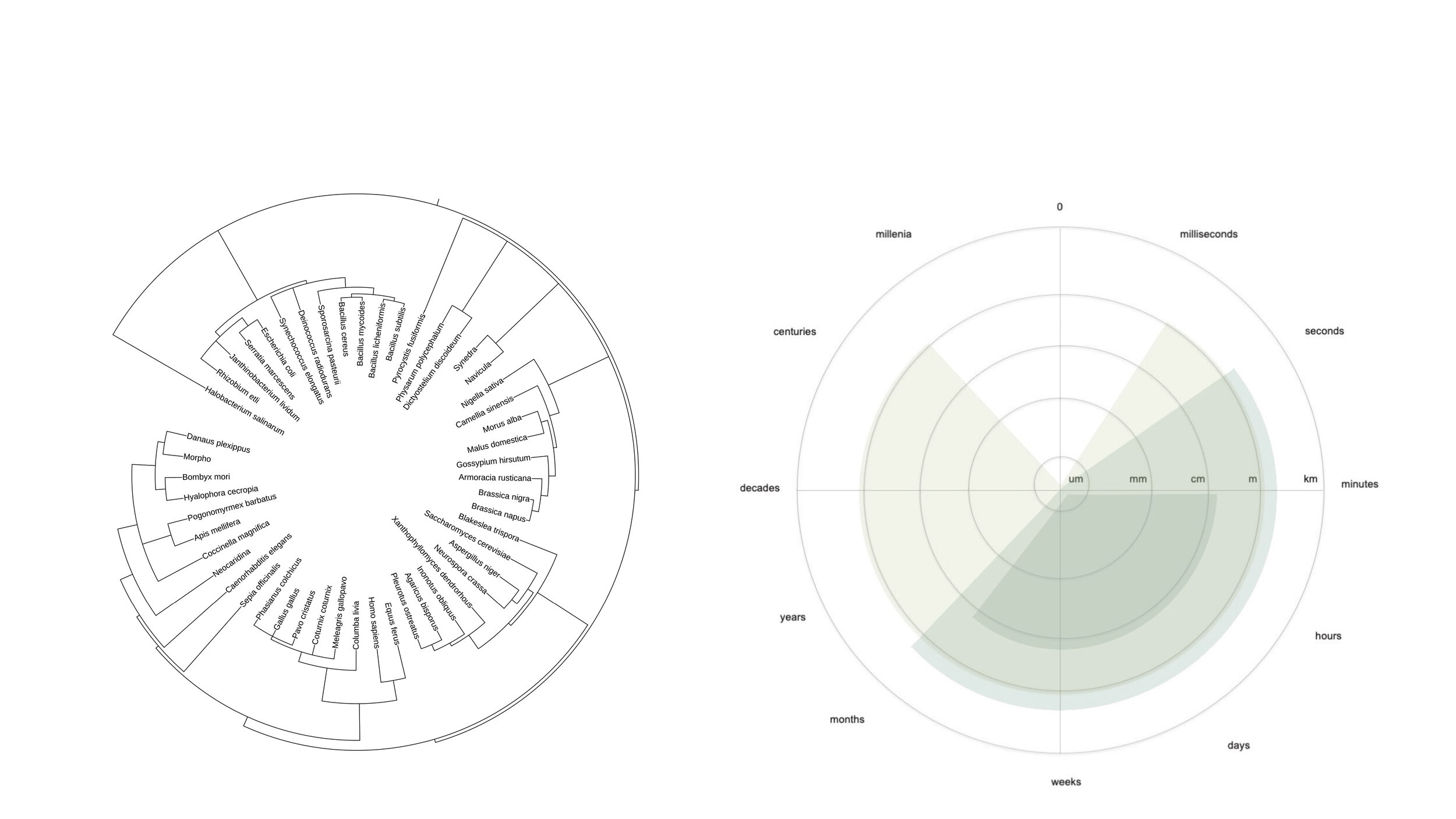
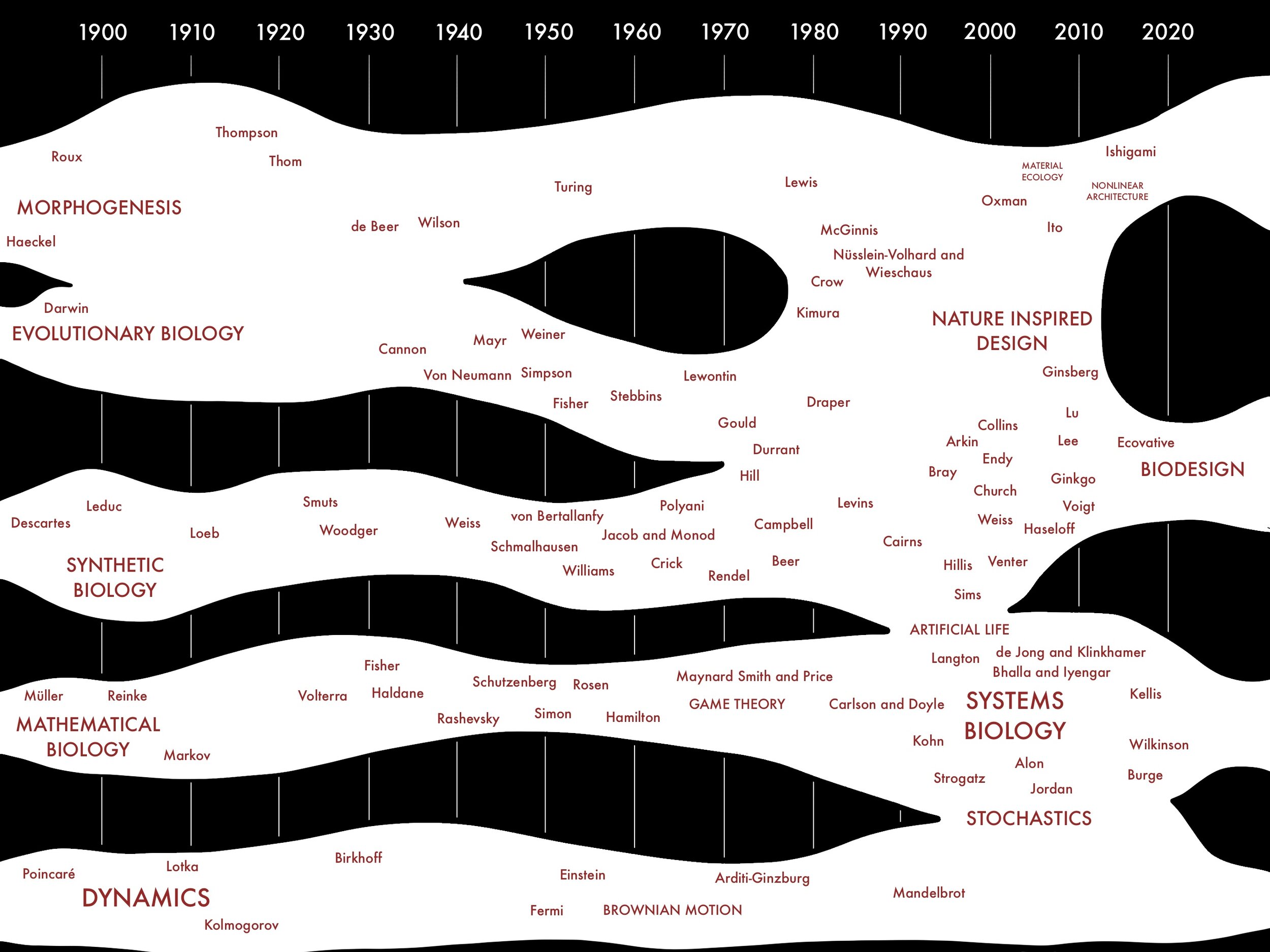
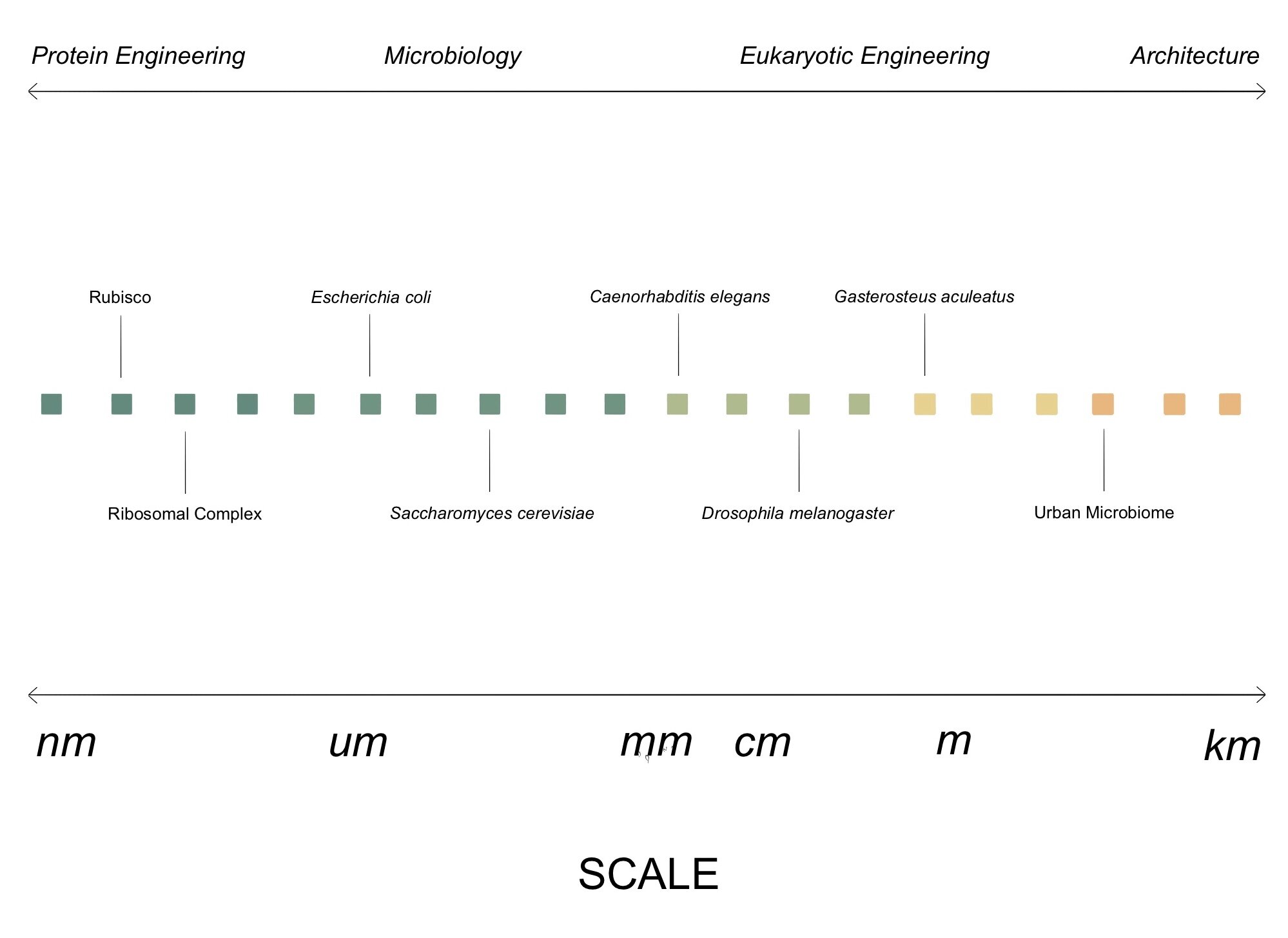
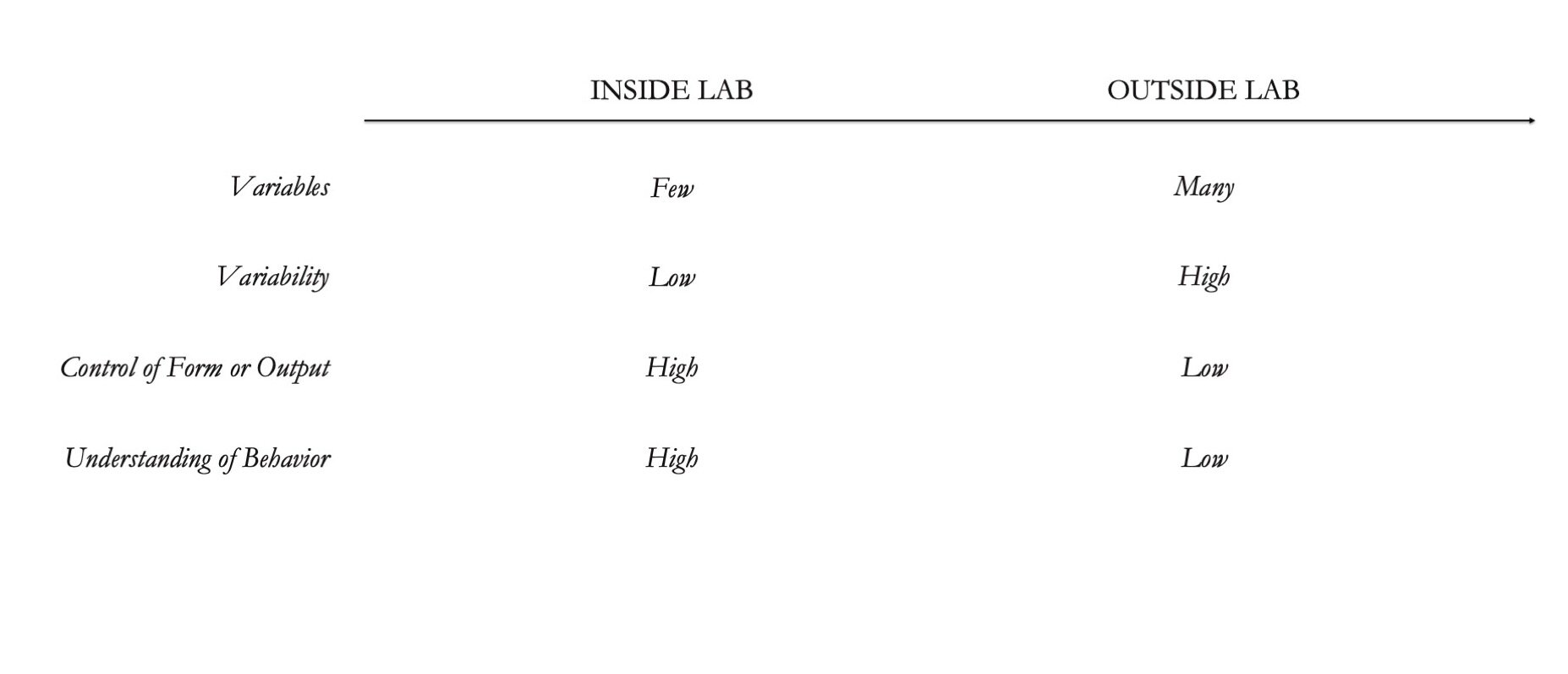

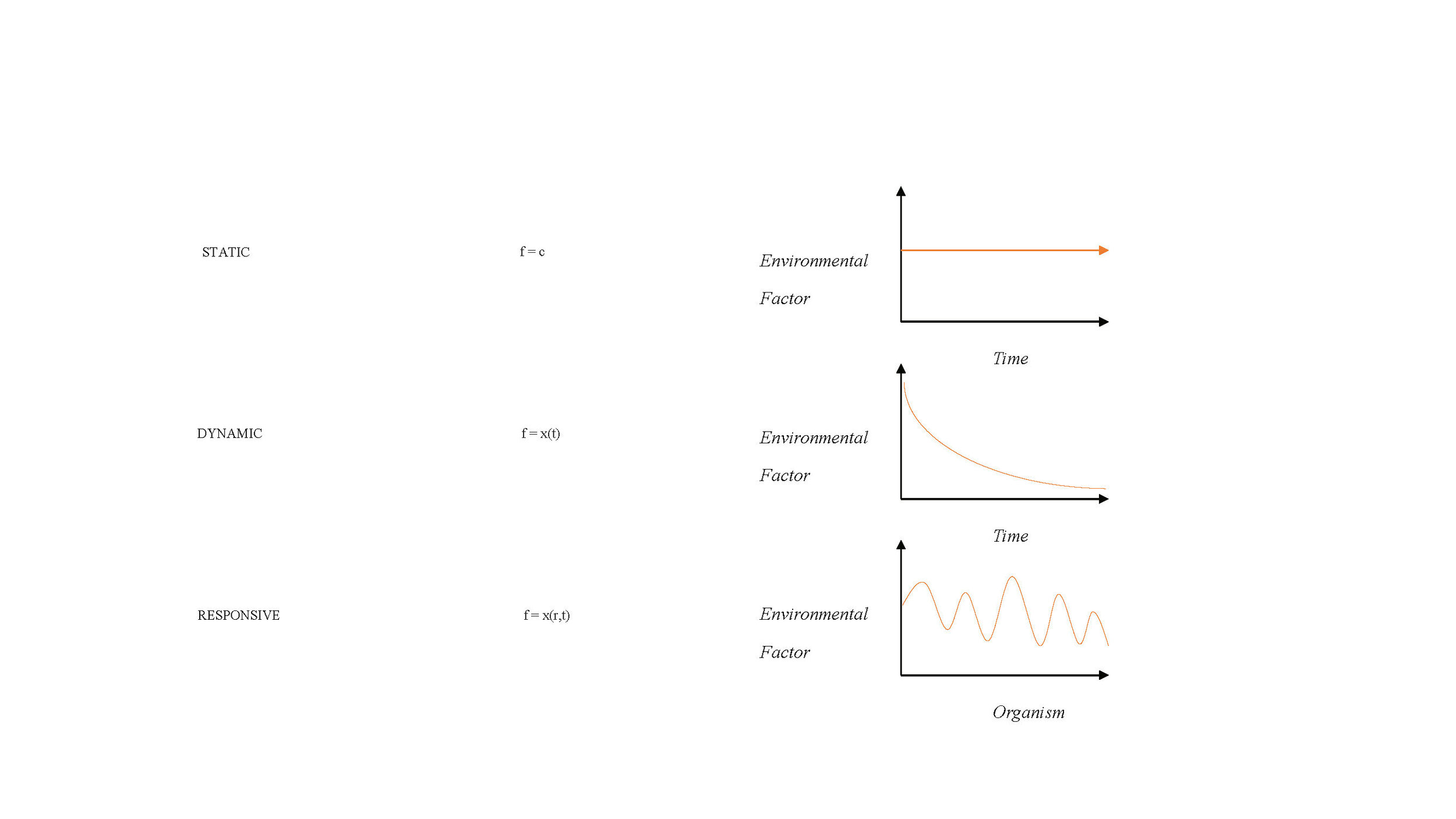


How does one reconcile the complex uncertainties of living systems with the control required for real-world design? This is the central question facing the field of biological design and the creative intersection it occupies, seeking to move beyond the mimicry of biological processes and structures into the physical fabrication of biohybrid materials and products. In experimental biology, the variability of life is often intentionally stifled through the use of highly controlled environments and well-characterized materials and organisms. However, the resulting findings cannot easily be translated out of the lab in a physical setting, severely limiting the potential impacts of this field. The stakes for impactful science and design are becoming increasingly high, given the stark deterioration of the natural environment and the imminent exploration of extreme reaches, such as deep space. At this point in the history of science and design, we are fortunate to experience two extremes — tools that allow for finer control than ever before possible, be it additive manufacturing, microscopy, or computational design — and a wave of systems-level thinking that grapples with the overwhelming complexity and variation of nature. Building upon ideas from nonlinear dynamics, systems biology, architecture, and design, I present an experimental approach to biological design, which seeks to provide guidelines and achieve influence at large spatiotemporal scales and in dynamic environments while considering inherent stochasticity in living systems as a feature. I present five project areas, spanning multiple phyla, scales, and public venues, through which I develop and demonstrate the practice of Organism-Environment Design.
Credit: Sunanda Sharma

The term nonlinearity has also been referenced in a more general approach called nonlinear science. Nonlinear science recognizes that throughout nature, the whole is greater than the sum of the parts, therefore reductionism is inadequate to deal with intricate questions in modern science64. Over the last fifty years or so, nonlinear biology has been echoed across different fields including biodynamics, mathematical biology, biostatistics, ecology, evolutionary and developmental biology, and most recently, systems biology. It has also served as a theoretical or philosophical basis for structural development within design and architecture65. This path of development can be mapped into a sort of thought atlas, based on that of Charles Jencks, in which he describes the evolution of 20th century architecture66.
Credit: Sunanda Sharma

The idea of experimental evolution and evolutionary biology, in general, is surprisingly harmonious with the principles and aims of the field of architecture. This field is concerned with the creation of structures and spaces, usually on a large scale with respect to humans. Awareness of the environment as a factor and inspiration in architectural design has been embedded within the field for centuries. A majority of these meditations focus on architecture as a largely passive physical boundary and container — or connection — to the natural world, especially in the context of climate change. In the last thirty years, many new terms and fields have sprouted — environmental architecture, living architecture, green building, sustainable architecture, ecological design, ecoarchitecture, and bioclimatic architecture, among others. Within 21st century Japanese architecture, there is a significant appreciation for ecology, sustainability, and the use of architecture as a “new nature” that mediates or hovers between the natural and the manmade or artificial2. Concurrently, the idea of the building as an organism is central to the field of material ecology, founded by Dr. Neri Oxman, which unites principles of biology, materials science, computational design, and architecture to exceed traditional ways of building and making.
Credit: Sunanda Sharma

The laboratory serves as an architectural container that reduces environmental variables. This is furthered by the use of environmental chambers such as incubators, refrigerators, freezers, autoclaves, and cold rooms. While this allows for simplification and greater control, it does not provide a useful analogue environment for translational design or experimentation.
Credit: Sunanda Sharma

Organism-Environment Design (OED) is defined as the process of observation, generation, and prediction of the relationship dynamics between an organism and its surrounding environment over space and time. Rather than focusing solely on the organism, OED as a field applies equal focus to a local biotic and abiotic environment. Both of these subjects are separately recognized to have temporal dynamics, meaning they change over time, and together they have spatial dynamics as well, meaning they vary from point to point in Cartesian space even at the same time. Organisms can be engineered, wild type, individual, population, and from any domain of life. Environments include a complex of factors such as radiation, air composition, humidity, substrate, nutrient distribution, other organisms, and the built environment.
Credit: Sunanda Sharma

Dynamism is an inherent and much celebrated property of life across time scales. Many of the other traditionally recognized properties of individual life3,4 — growth, reproduction, response to environment, homeostasis, movement, and metabolism — as well as groups of life — as in populations and ecosystems — are related to dynamism. Dynamism is defined as the quality of being dynamic or having dynamics; dynamics is defined as changes in a system over time5. A great effort across many subfields of biology relates observing, understanding, reproducing, and modifying these types of changes. While dynamics is most often tied to physics and mechanics, it has been notably applied to many biological and chemical phenomena, including morphogenesis6, Belousov- Zhabotinsky reactions7, heart rhythms8, and predator-prey interactions9.
Credit: Sunanda Sharma

Observation is one of the modes through which humans interact with the surrounding world. It forms one of the deepest roots in natural philosophy3,4, and in turn, science. Observational tools are commonly used throughout science to observe life and the natural world, with advancements allowing for the revelation of impossibly intricate details over greater scales than ever before. At this transformational time in history — in which tools enable the viewing of bonds breaking and forming5, the exploration of the surfaces of other planets6, and deep investigation into the origin of life on Earth7 — the shift from observation of nature to interaction with it has organically begun. Science itself is being redefined as a field that merges empirics and creativity and that is interconnected to design, art, and engineering8. The opportunity to repurpose tools for passive measurement into ones for intentional creation is presenting itself, signaling a movement from observation to generation.
Credit: Sunanda Sharma